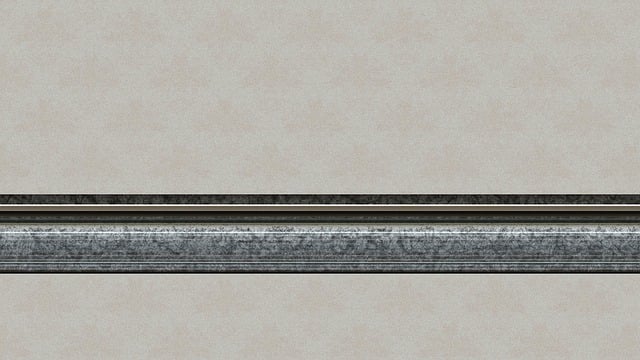Injection molding stands out as an indispensable manufacturing process across the automotive, medical, and consumer goods industries. This technique involves injecting molten plastic into molds to produce precise parts at scale, which is essential for creating components ranging from car engine casings to medical implant housings. In the automotive sector, it ensures both functional integrity and aesthetic standards are met for both large and small parts. The medical field leverages injection molding's precision and adaptability to create products that comply with stringent biocompatibility regulations. Consumer goods, including appliance parts, electronic casings, and toys, also benefit from its versatility and efficiency. Manufacturers in these domains face the challenge of optimizing material selection, mold design, and process parameters while maintaining quality and adhering to industry standards. The integration of advanced technologies like 3D printing with injection molding opens up new design possibilities and streamlines production workflows, signaling a significant evolution in manufacturing. Injection molding's role is pivotal, providing precision, efficiency, and versatility that surpass other methods, and it continues to advance alongside emerging innovations, cementing its importance in modern manufacturing practices.
Injection molding stands as a cornerstone in modern manufacturing, shaping everything from automotive parts to medical devices, and consumer goods. This article delves into the intricacies of this versatile process, illuminating its pivotal role across diverse sectors. By exploring the challenges and triumphs in injection molding for the automotive, medical, and consumer industries, we uncover how manufacturers achieve precision, efficiency, and innovation within this multifaceted field. Join us as we examine case studies that highlight injection molding excellence, underscoring the critical interplay between technology, design, and production strategy.
- Navigating the Complexities of Injection Molding for Automotive, Medical, and Consumer Products
- Injection Molding Excellence Across Industries: Case Studies in Automotive, Medical, and Consumer Goods Sectors
Navigating the Complexities of Injection Molding for Automotive, Medical, and Consumer Products

Injection molding plays a pivotal role in manufacturing components for the automotive, medical, and consumer industries due to its ability to produce precision parts at high production rates. The process of injection molding involves injecting molten material into a mold where it cools and solidifies into the desired shape and form. This technique is particularly advantageous for the automotive sector, where it is used to create everything from small interior components like buttons and handles to larger parts such as engine casings and air intake manifolds. The medical industry leverages injection molding for a wide array of applications, including the production of disposable syringes, surgical tools, and even intricate implant housings that must meet stringent biocompatibility standards. In the consumer realm, injection molding’s versatility shines through in everyday items such as household appliance parts, electronic casings, and even children’s toys. The complexity of injection molding lies not only in the precision required for each product but also in managing the diverse materials and varying part geometries across these different industries. Manufacturers must navigate these complexities by optimizing material selection, mold design, and process parameters to ensure consistency, quality, and efficiency while adhering to industry-specific regulations and standards. Advanced technologies such as 3D printing are increasingly being integrated into the injection molding process to enhance design capabilities and streamline production workflows, further complicating but also enriching the manufacturing landscape.
Injection Molding Excellence Across Industries: Case Studies in Automotive, Medical, and Consumer Goods Sectors

Injection molding stands as a cornerstone technology across diverse industries, including automotive, medical, and consumer goods sectors. Its role in product manufacturing is multifaceted, offering precision, efficiency, and versatility unmatched by other production methods. In the automotive industry, injection molding has revolutionized components ranging from dashboards to engine parts, enabling manufacturers to produce complex geometries and intricate designs with high repeatability. The ability to rapidly prototype and iterate design elements makes it an indispensable tool in the development of new vehicle models, ensuring safety, durability, and aesthetic appeal of the finished products.
The medical sector similarly benefits from injection molding’s precision and cleanliness, which are critical for devices that must meet stringent regulatory standards. From disposable syringes to complex surgical instruments, the technology’s capacity to create parts with tight tolerances and seamless finishes is paramount. In the consumer goods realm, injection molding’s versatility shines through in everyday items such as household appliances, electronics enclosures, and children’s toys. The high-volume production capabilities of injection molding allow for cost-effective manufacturing of products that are both functional and aesthetically pleasing. Case studies from leading manufacturers demonstrate how injection molding excellence is driving innovation and efficiency in all three sectors, underscoring its importance as a key enabler of modern manufacturing.
Injection molding stands as a cornerstone technology across diverse sectors, including automotive, medical, and consumer industries. The intricate process not only demands precision and efficiency but also adaptability to meet the varying needs of each field. This article has illuminated the complexities involved in mastering injection molding within these domains, providing insight through compelling case studies that highlight the excellence achieved by leading manufacturers. As innovation continues to propel the industry forward, the future of injection molding is poised to deliver even more sophisticated and high-performance products, driving advancements and setting new standards for quality and durability. The expertise and commitment demonstrated in these sectors underscore the enduring impact of injection molding technology in shaping the next generation of consumer goods, medical devices, and automotive components.
